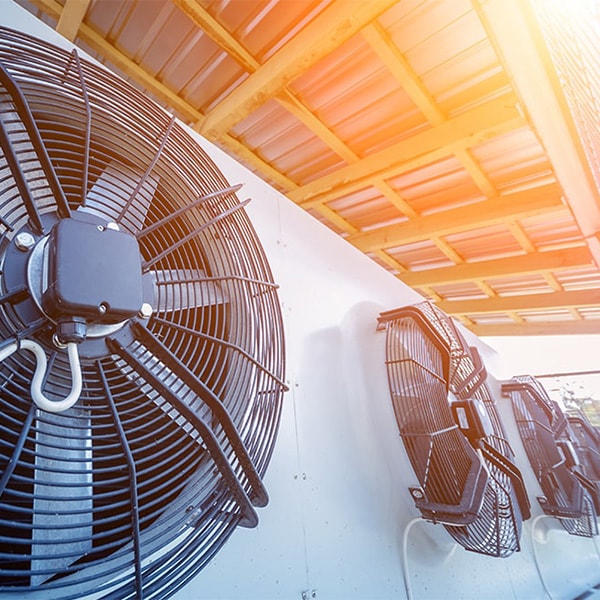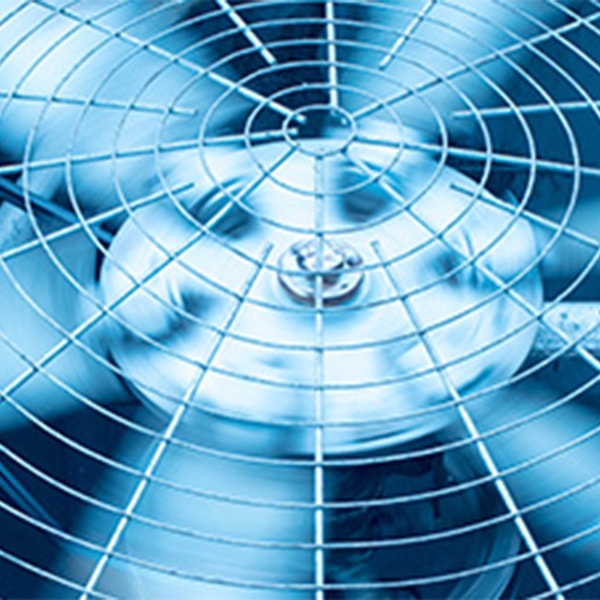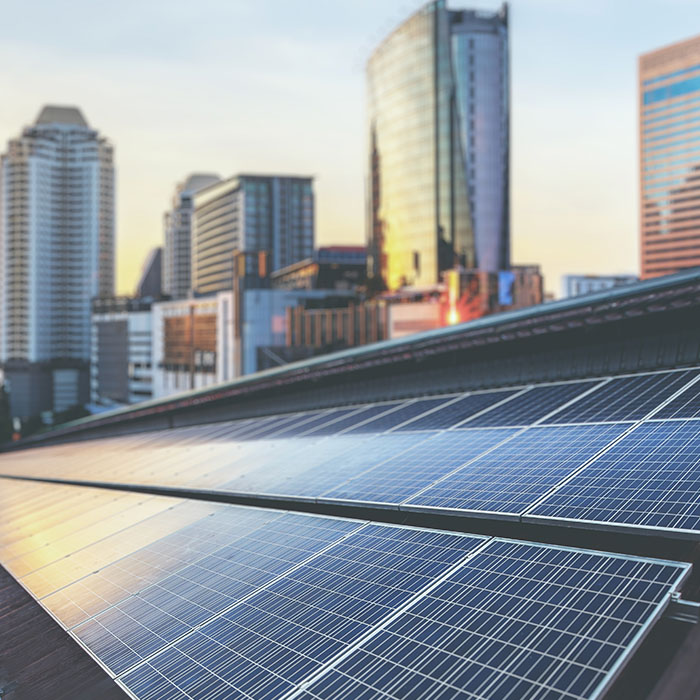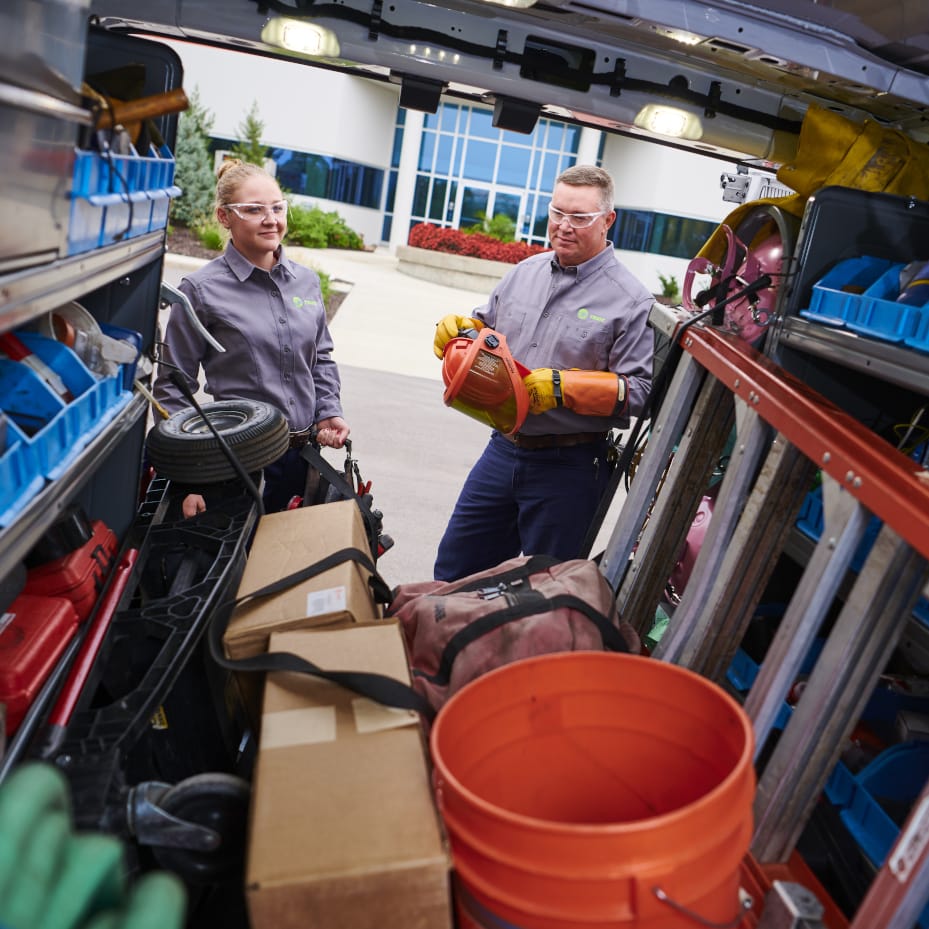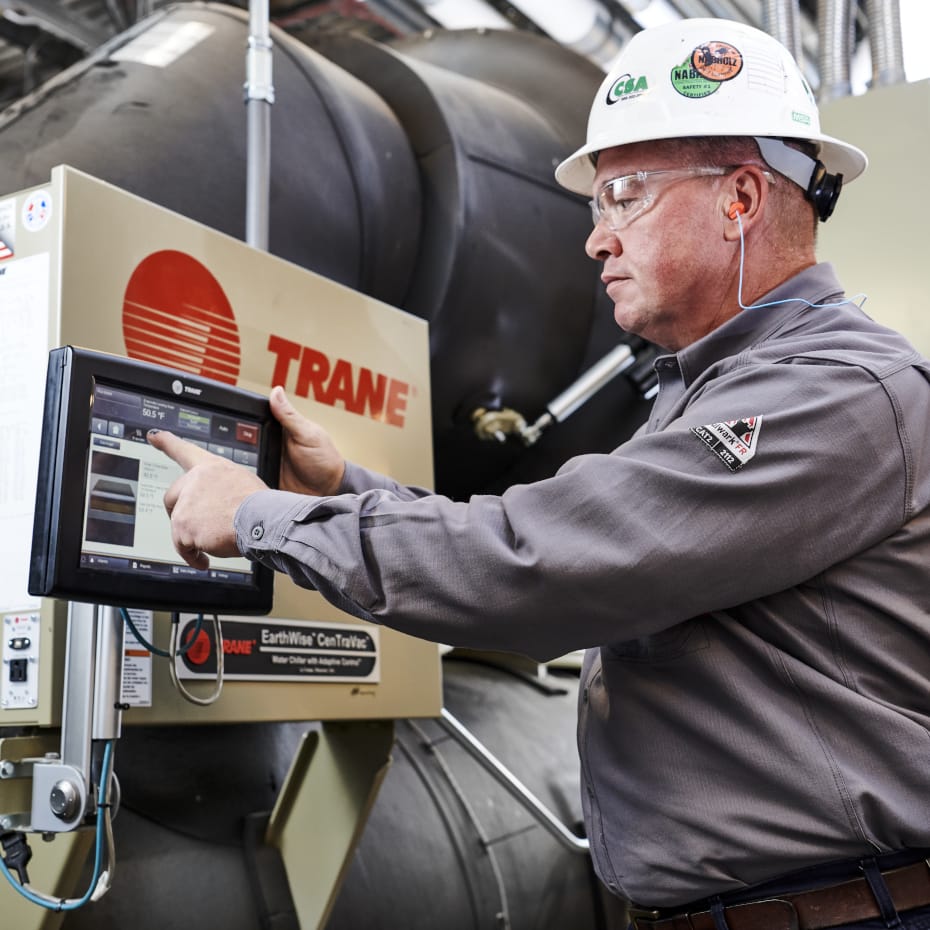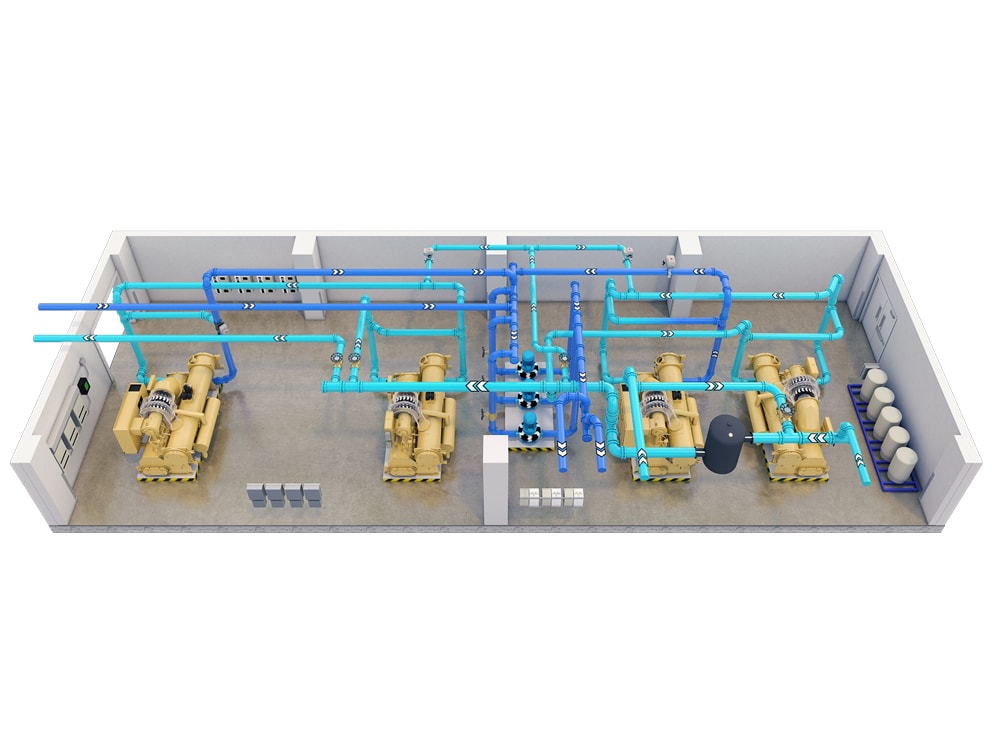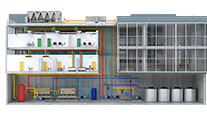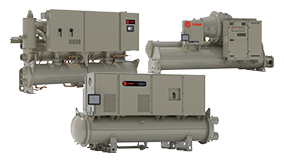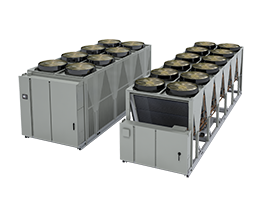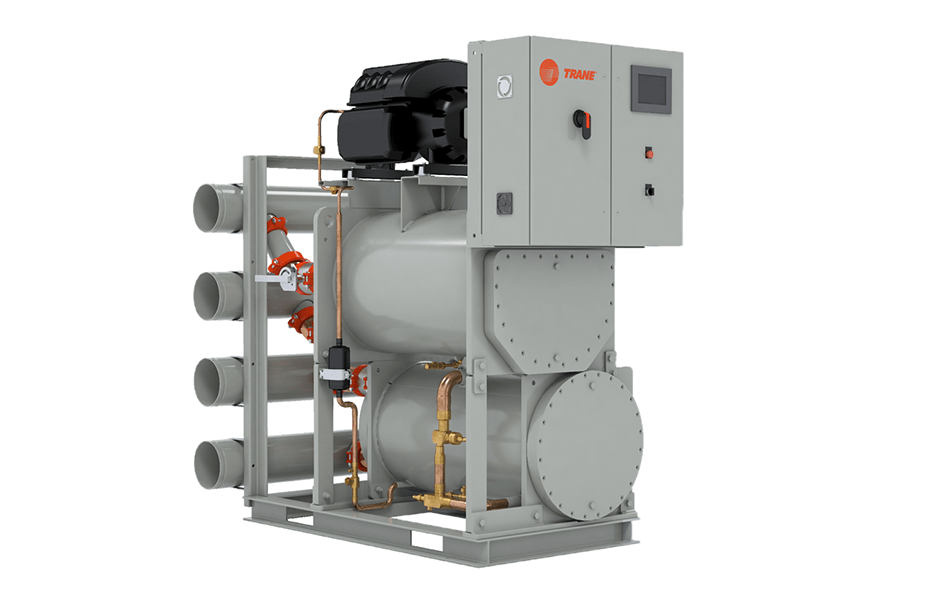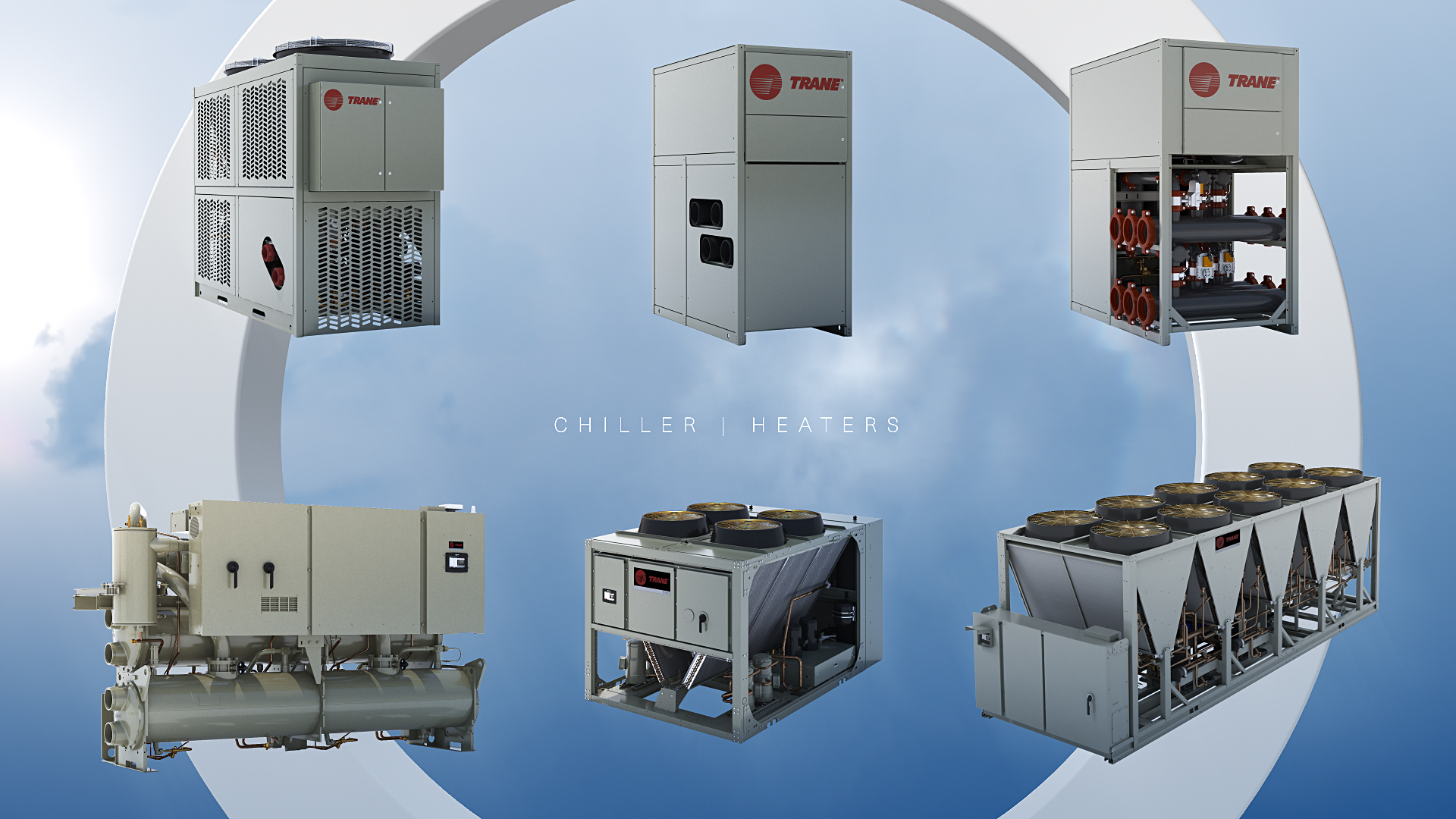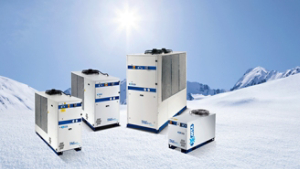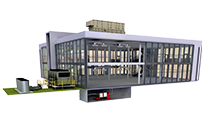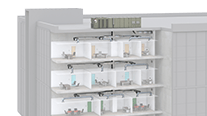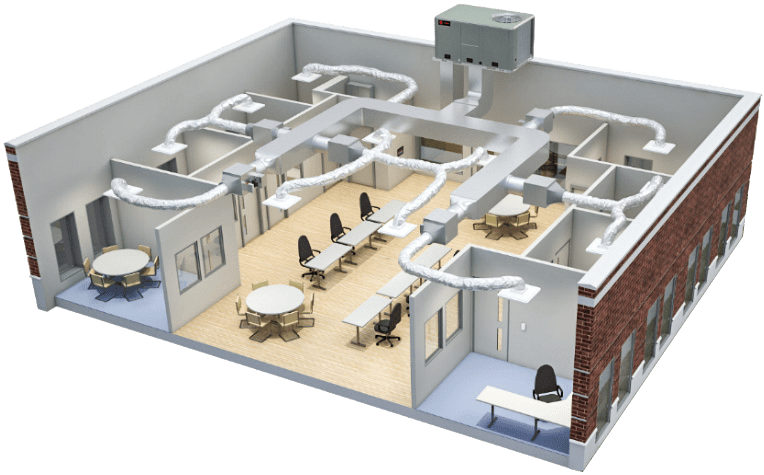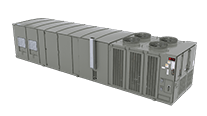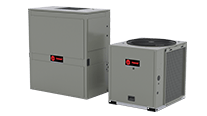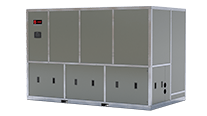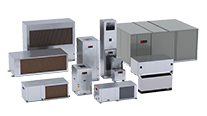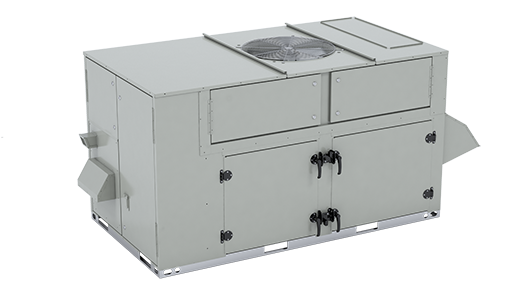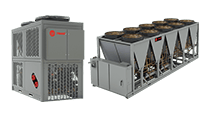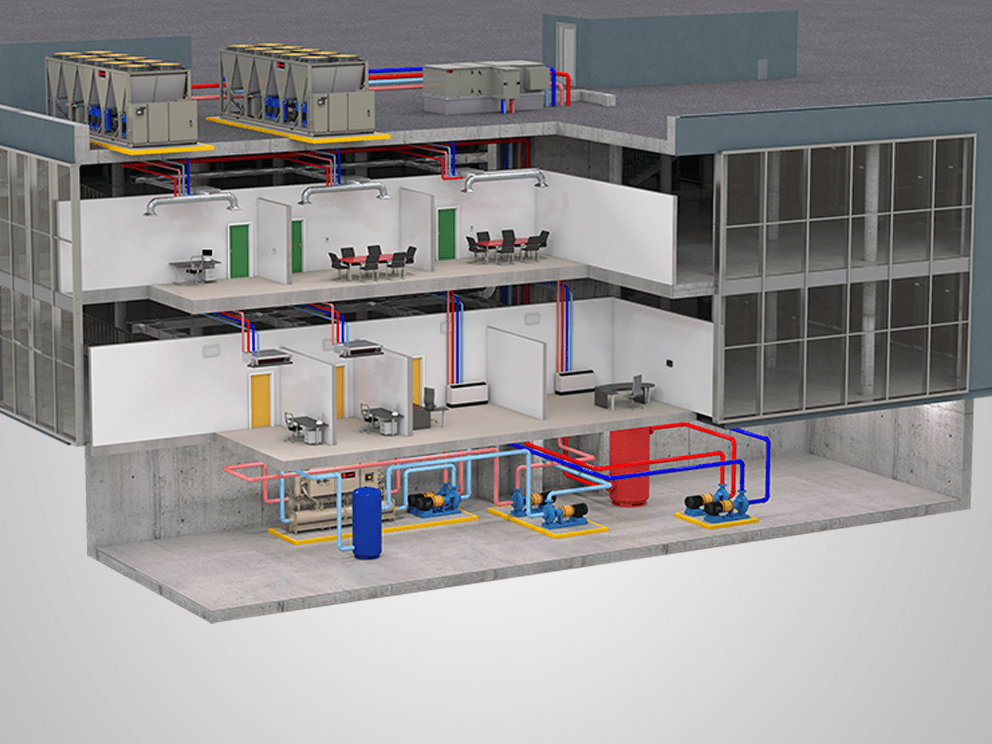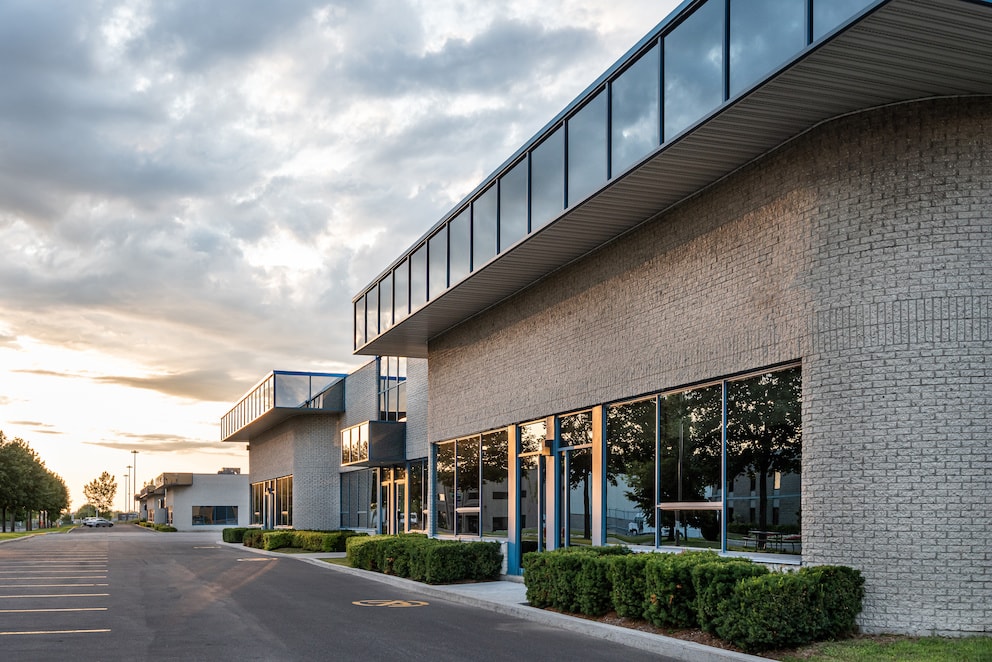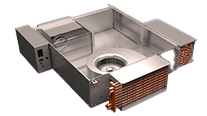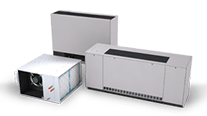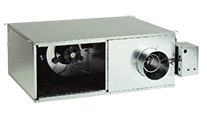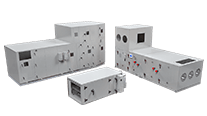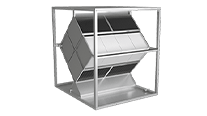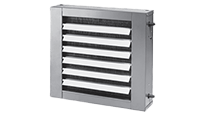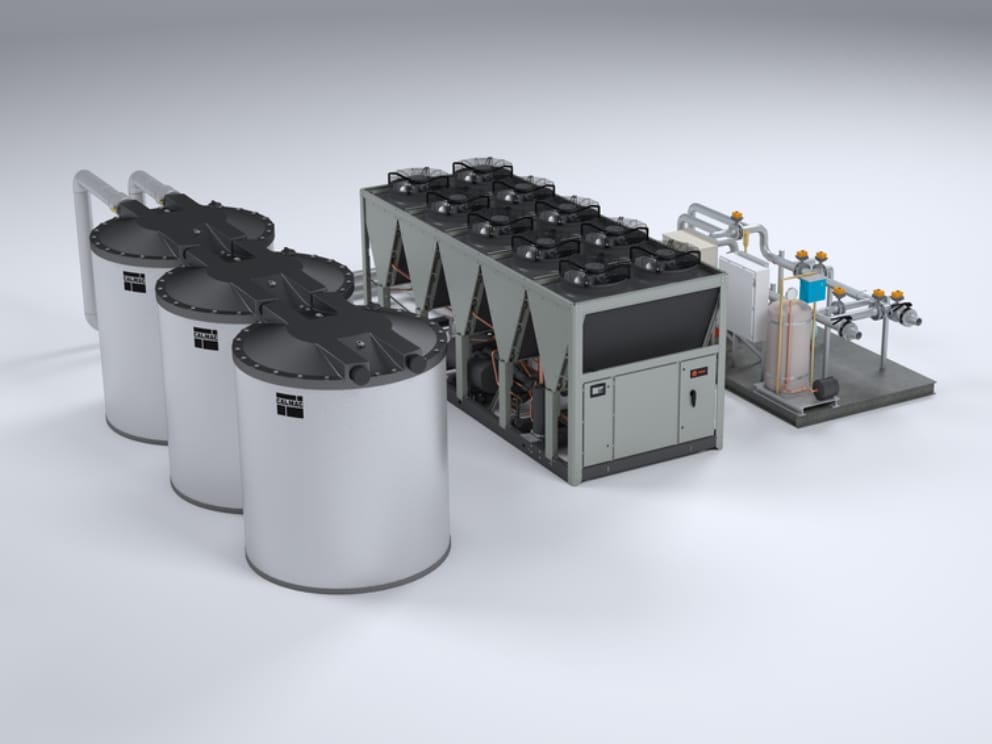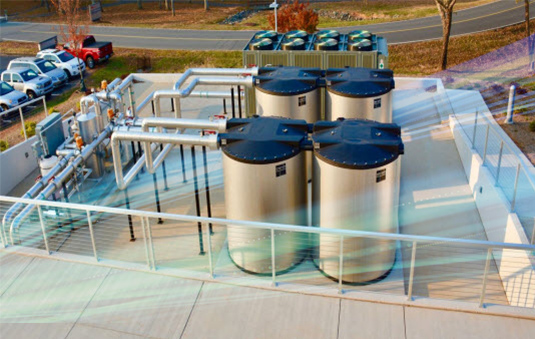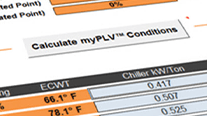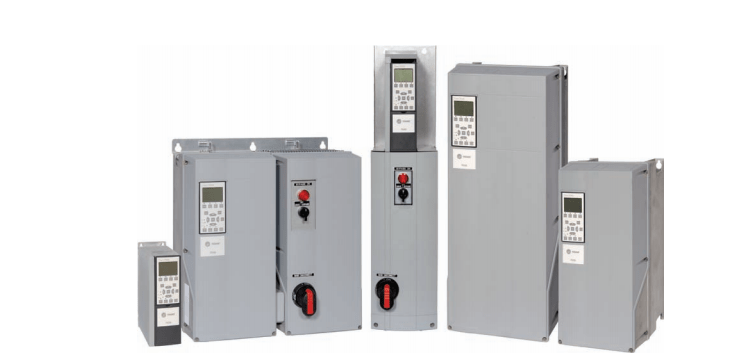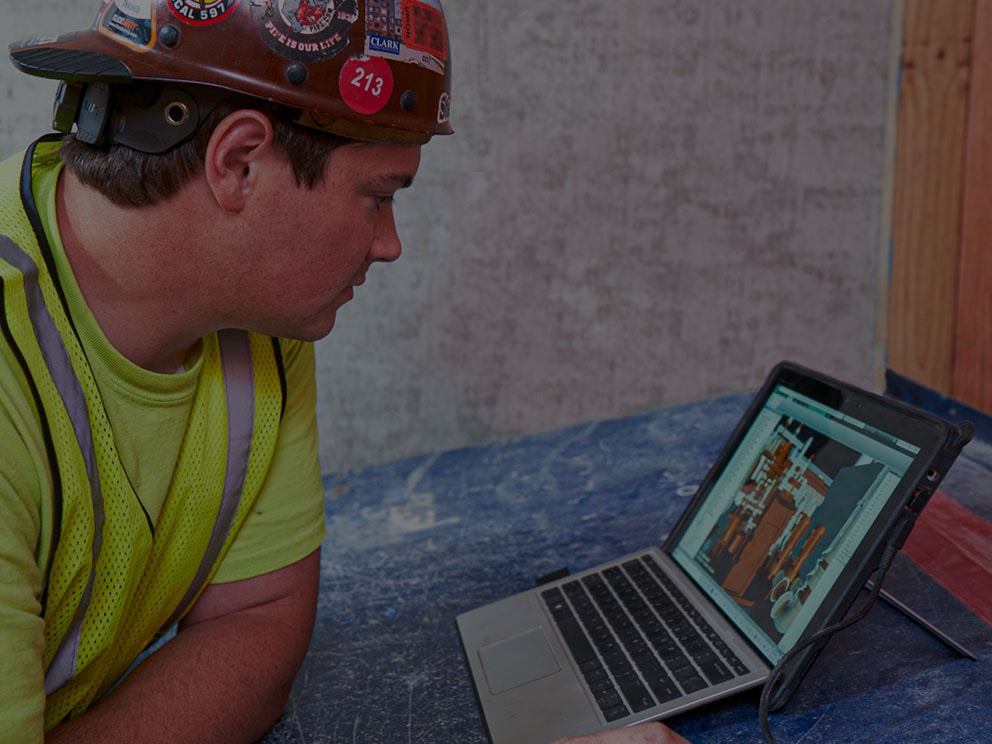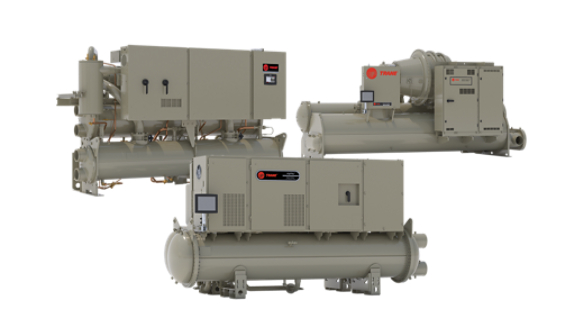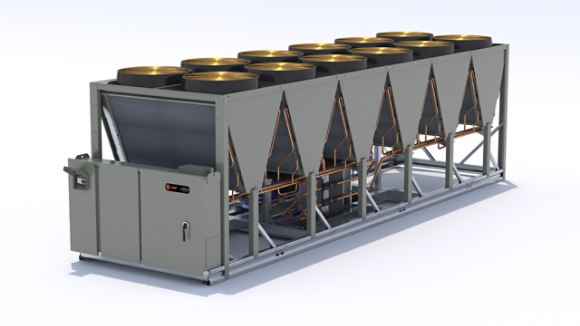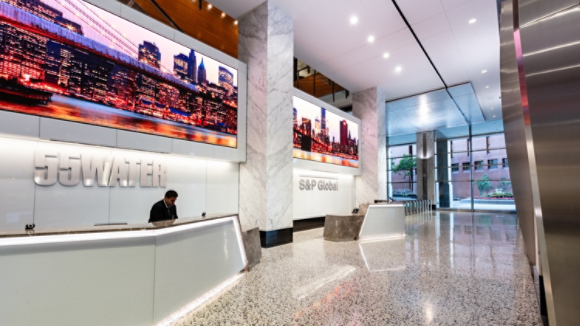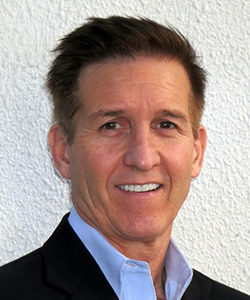- Thermal energy storage provides a complete solution with building-level controls and digital services.
- Thermal energy storage tanks are easy to integrate and come with system design guidance, control sequences, and operation dashboards, delivering reliable performance and complete control. Visit Trane Design Assist.
- Buildings with thermal energy storage can add electric batteries for a hybrid energy storage system, offering cost-effectiveness, longer lifespan, better cycle management, and enhanced energy flexibility for resilience.
- Made with durable polyethylene, thermal energy storage tanks have an expected 40-year lifespan with proper maintenance.
Ice Bank® Model A Tank, Ice Bank® Model C Tank
Thermal Energy Storage Tanks
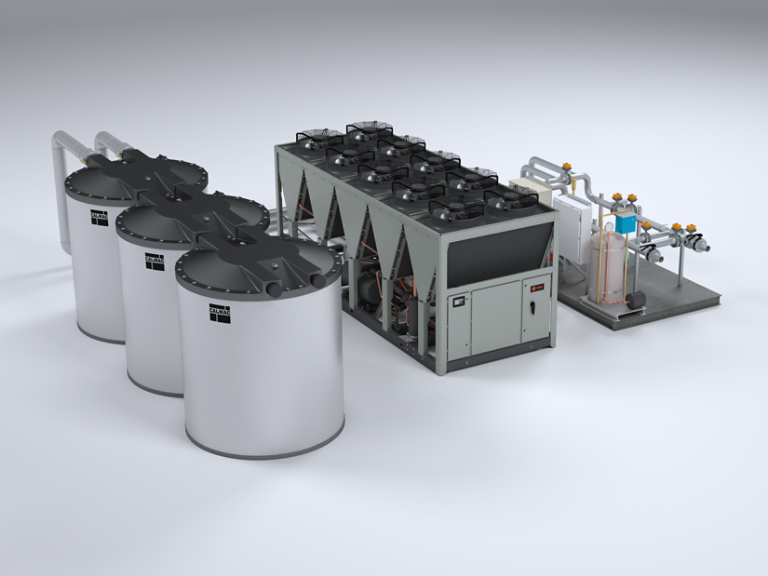
Ice Bank® Model A Tank, Ice Bank® Model C Tank
Thermal Energy Storage Tanks
A flexible way to manage electric demand. A smarter way to help save on energy costs.
Modernize your building's thermal management with thermal energy storage. Help reduce peak demand, lower energy costs, and support renewable energy usage.
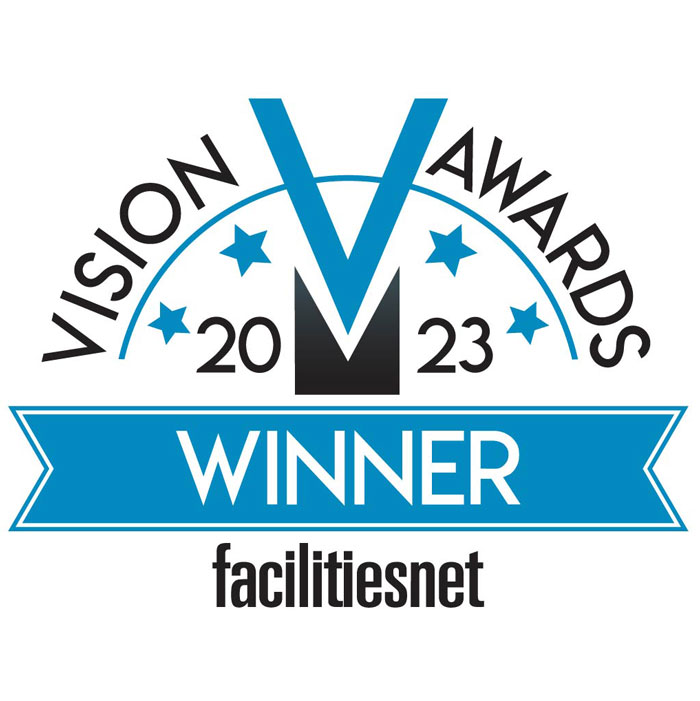 5th Annual Vision Awards Winner
5th Annual Vision Awards Winner
-
Proven Performance with Ice-Based Thermal Energy Storage Tanks
Thermal energy storage (TES) is a reliable solution for cost-effective, sustainable heating and cooling. With over 4,000 installations worldwide, TES offers a modular, scalable system backed by expert support. Plus, with proper maintenance, TES tanks have an expected 40- year lifespan.
-
Lower Your Energy Bills
Thermal storage tanks act like a battery, collecting and storing thermal energy during off-peak hours when electricity rates are lower and using it during peak times. This reduces demand charges and shifts consumption to more cost-effective times, helping to significantly lower energy bills.
-
Support Your Sustainability Targets
Thermal energy storage supports sustainability by storing thermal energy during off-peak hours, reducing reliance on fossil fuels and cutting carbon emissions. It balances electric loads, enhances grid resiliency and helps increase renewable usage by up to 50%.*
*ASHRAE® RP-1607. 2018
-
Avoid Unnecessary Upgrades
Thermal energy storage systems can help avoid the need for electrical infrastructure upgrades and may qualify for federal incentives and utility rebates, making them a cost-effective solution for both new construction and existing buildings.
-
Build Resiliency into Your Electrified System
Thermal energy storage tanks store cooling or heating collected during off-peak times to provide thermal management during periods of peak demand. This reduces strain on the grid and helps maintain occupant comfort.
-
Take Advantage of Federal Tax Incentives
Thermal energy storage projects may qualify for federal investment tax credits worth up to 50% of costs if certain criteria are met. These incentives are currently available for projects that begin construction by 2032, giving you a valuable window to act.*
Video
Discover Trane® Thermal Energy Storage Tanks
Thermal energy storage addresses one of the biggest energy users in buildings—HVAC—and can help increase the use of renewable energy by as much as fifty percent*. Recent tax incentives now make thermal energy storage more affordable than ever.
*ASHRAE® RP-1607. 2018
Related Products
-
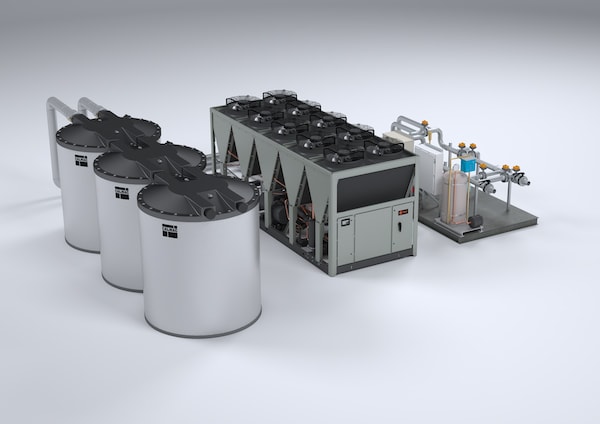
Thermal Battery Storage Systems
Trane Thermal Battery™ systems are premier HVAC plants that provide a distributed resource for our changing grid. Their ability to store thermal energy enables your building to reliably modify HVAC operations to optimize for carbon reduction or energy cost savings. -
Trane’s water-cooled chiller portfolio delivers an innovative product lineup that meets a variety of application challenges. Our CenTraVac® chiller is one of the industry's quietest, most reliable and efficient low-emission chillers.
-
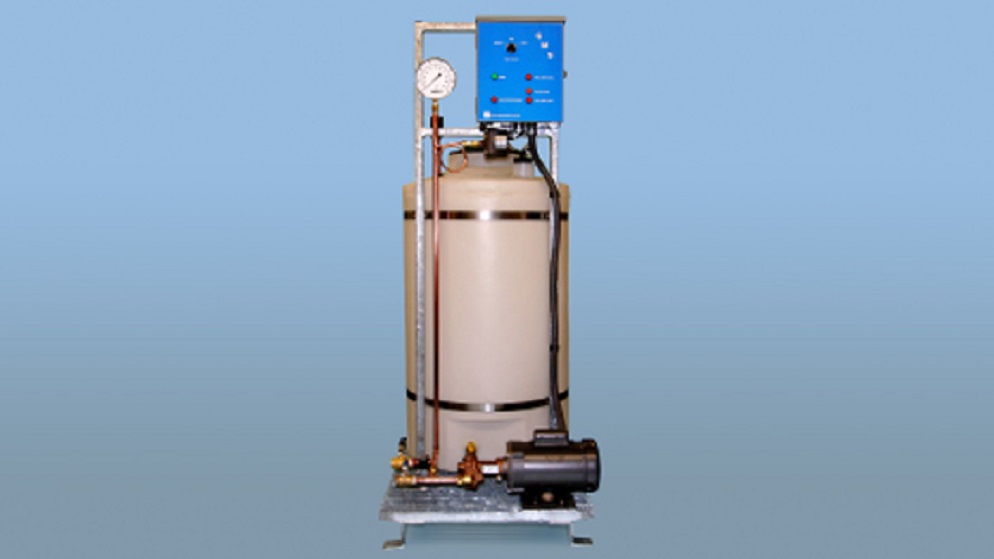
CALMAC® Glycol Management System
A Glycol Management System (GMS) helps maintain the proper volume of coolant in a building's circulating loop. -
High efficiency and low noise are the hallmarks of all our air-cooled chillers. Our robust portfolio features a wide operating map so—you can find the just-right solution for your building. We offer an array of tonnage sizes, efficiencies and performance features to meet your requirements.
-
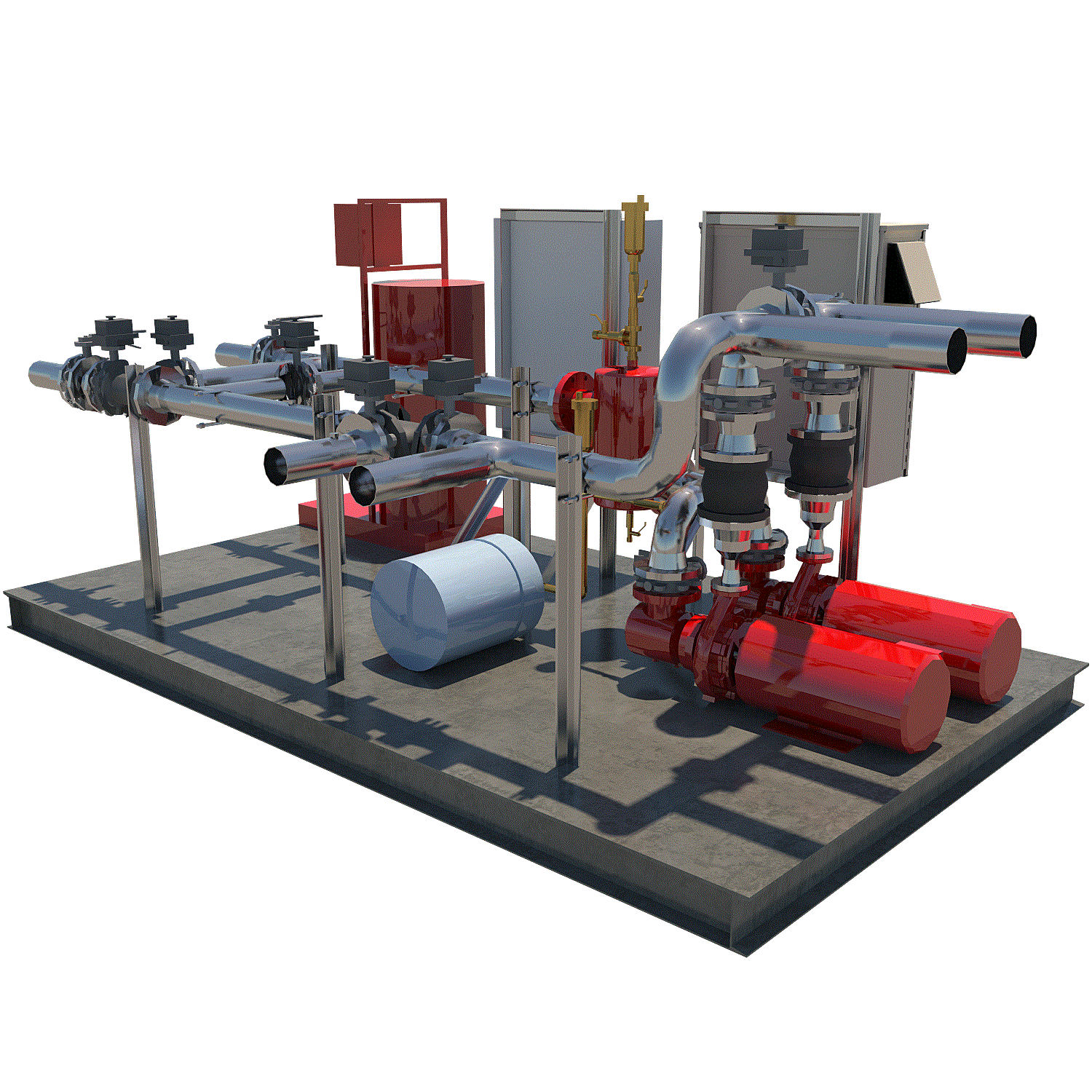
Trane System Completion Module
Our ice completion module is a Trane-designed, built and functionally tested skid that reduces design and installation time for completion of thermal energy storage systems.
Frequently Asked Questions
Ice-based thermal energy storage (TES) is a system that stores thermal energy. This stored energy can be used for cooling and/or heating in a variety of commercial and industrial applications. Thermal energy storage helps shift energy consumption from peak to off-peak hours, reducing energy costs and alleviating stress on the electrical grid.
- Ice Production: During off-peak hours (usually at night), electricity is used to freeze water in a thermal energy storage tank, creating ice using chillers.
- Energy Storage: The ice acts as a thermal battery, storing the cold energy until it is needed.
- Cooling Application: During peak hours (typically during the day), the stored ice is melted to provide cooling. The cold water or air produced from the melting ice is circulated through the building's HVAC system to cool the indoor environment.
Heating Application
- Heat Recovery: During the ice-making process, chillers generate waste heat. This waste heat can be captured and used for heating purposes. Advanced thermal management systems can integrate ice-based thermal energy storage with heat pump chillers. Heat pump chillers transfer heat from one place to another, using the cold energy stored in ice for cooling in addition to using the energy generated during ice production for heating.
Today, electricity mainly comes from coal and gas, which are forms of stored energy. Renewable energy is variable; the sun doesn’t always shine and the wind doesn’t always blow. As more wind and solar are generated, we will need to move toward technologies that can store and dispatch renewable energy for later use.
Thermal energy storage is one such technology. According to ASHRAE Research Paper 1607, thermal energy storage can increase the usage of renewable energy by up to 50%. The move toward sustainability and renewable resources will completely change the potential value of thermal energy storage in buildings.
(Plumbing Systems & Design. Making Buildings More Efficient with Hybrid Cooling. September 2010).
Electrification of heat is coming, so a building that can shift its electric consumption to leverage the supply will be very important. The advantage of an electrified building is, that as the grid gets cleaner, the building’s carbon emissions will go down proportionally. If the building burns fossil fuels, the associated emission stays the same. Understanding heat pumps, and thermal energy storage’s relationship to them, will be critical.
(ASHRAE Journal. Electrification, Heat Pumps and Thermal Energy Storage. July 2020).
With the increasing demand for warm thermal energy storage, scientists at Lawrence Berkeley National Laboratory are looking at developing next-generation materials and systems to be used as heating or cooling mediums. They are also creating a framework to analyze costs as well as a tool to compare cost savings.
(Berkeley Lab. Turning Up the Heat: Thermal Energy Storage Could Play Major Role in Decarbonizing Building. November 18, 2021).
Advances in intelligent services enable building operators to see how their system is operating and trends that may impact future performance as conditions on the grid change. Connected chillers and building automation systems have made thermal energy storage systems smarter and easier to monitor and control. Built-in control algorithms help allow building operators to achieve cost savings, reduce emissions, or both. Design aid tools provide a repeatable approach with simple schematics and sequences to help reduce time and risk.
Resources & Insights
-
Customer Story
-
-
Sustainable Transformation: Trane's Thermal Energy Storage System at 11 Madison Avenue, NYC
-
Customer Story
Shooting Star Casino’s Energy-Efficient Advancements: Sustainability and Comfort
-
Zero Net Energy and LEED Gold: California State Lottery Headquarters' Innovative Energy Solutions
-
Energy-Efficient Renovation: Kings County Courthouse Achieves LEED Silver Certification
-
*Trane does not provide tax, legal, or accounting advice. This material is for informational purposes only and it should not be relied on for tax, legal, or accounting advice. Tax law is subject to continual change. All decisions are your responsibility and you should consult your own tax, legal, and accounting advisors. Trane disclaims any responsibility for actions taken on the material presented.


